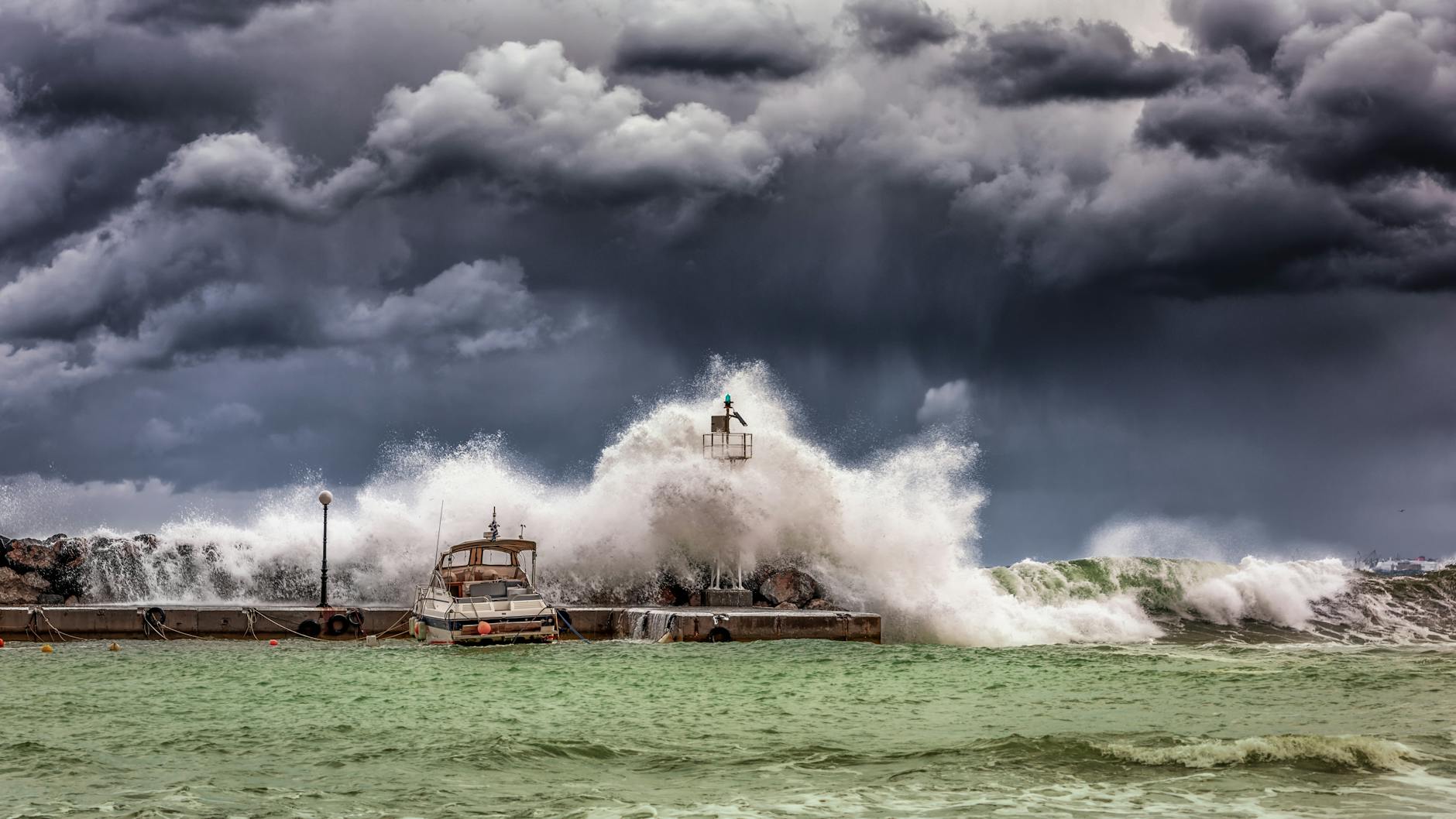M8.8 Megaquake and Tsunami off the Kamchatka Peninsula
Comprehensive Analysis of Damage, Economic Impact, and Future Seismic Risks for Pacific Coastal Nations
🌊 Article Summary (3-Minute Read)
- Event Overview: At 11:24 Kamchatka time on July 30, 2025, a magnitude 8.8 megaquake struck off the coast of the Kamchatka Peninsula, Russia. The hypocenter was approximately 19 km deep—the largest in the region since 1952.
- Tsunami Observations: Peak wave heights were 5 m at the northern Kuril Islands near the epicenter, 1.7 m in the Hawaiian Islands, and 1.3 m at Kuji Port in Iwate Prefecture, Japan. Alaska saw under 0.3 m, and California recorded around 0.5 m.
- Primary Damage: Severo-Kurilsk Port and a fish-processing plant were inundated. In Japan, some 2 million residents were ordered to evacuate, and rail and airports temporarily suspended service. Honolulu Airport closed for four hours, and Maui’s airport paused operations all day.
- Economic Impact: Far-east Russian seafood exports halted for several days. Some Japanese auto plants voluntarily shut down. Marine insurance premiums spiked briefly, raising logistics costs.
- Future Risk: The Russian Geophysical Service warns of aftershocks up to M7.5 within one month. Stress transfer along the Kuril–Japan Trench may trigger moderate quakes in that zone.
Intended Audience
- Disaster-management officials in Pacific coastal municipalities
- Executives and supply-chain managers in fisheries, port logistics, and tourism
- Coastal residents—especially vulnerable groups (seniors, persons with disabilities, families with children)
1. Tectonic Setting & Earthquake Characteristics
This reverse-fault event occurred on the Kuril–Kamchatka subduction zone. According to a USGS rapid analysis, the rupture spanned roughly 250 km north–south and 80 km east–west, with an average slip of 9 m. Though its energy release was about one-eighth that of the 2011 Tōhoku quake, the shallow depth and concave seafloor topography amplified the tsunami, prompting Pacific-wide alerts. The Russian Academy of Sciences declared it “the largest since the M9.0 in 1952.”
2. Direct Coastal Damage
2-1 Far-East Russia
- Severo-Kurilsk: Port and processing facilities were flooded by a 5 m tsunami. Dozens of fishing vessels were grounded, and freezer warehouses were damaged. Injuries were limited to the teens, but roads and power lines were partly cut.
- Petropavlovsk-Kamchatsky: The city center felt intensity 6+ shaking. Several brick buildings collapsed.
2-2 Japan
- Hokkaido & Tōhoku Pacific Coast: Kuji Port saw 1.3 m waves; Cape Erimo recorded 0.6 m. Five rail lines halted service briefly, and Sendai Airport runway closed for two hours. Fukushima Daiichi Nuclear Plant suspended treated-water discharge as a precaution.
- Evacuations: The Japan Meteorological Agency issued tsunami warnings/advisories from Hokkaido to Kyushu. Authorities ordered or recommended evacuation for roughly 2 million people. Shelters provided multilingual signage and writing boards.
2-3 Hawaii & U.S. West Coast
- Hawaiian Islands: Waikiki and Hilo reported 1.7 m waves. Officials evacuated about 100 000 residents to higher ground; 30 container vessels at Honolulu Port were redirected offshore. Honolulu International Airport reopened after 4 hours; Maui’s airport remained on hold all day.
- West Coast & Alaska: Crescent City, CA saw 0.5 m; Sitka, AK had 0.2 m. Two small-boat capsizes occurred due to strong currents, but no major inundation.
3. Initial Economic, Logistics & Tourism Impacts
| Sector | Specific Impact | Note |
|---|---|---|
| Fisheries | Kamchatka accounts for ~30 % of Russia’s seafood exports. Processing lines halted for 48 hours. | Short-term supply shortages and price spikes for frozen seafood. |
| Automotive | Three Japanese plants (Aichi, Fukushima, Tochigi) shut to ensure employee safety. | Three days’ parts inventory on hand—long-term production effects limited. |
| Tourism | Two Hawaiian cruise calls diverted; hotel cancellations up 5 %. | Losses in peak season may reach several million USD. |
| Logistics & Insurance | LNG tankers rerouted ~300 km per day. Marine insurance rates rose 2–4 %. | Similar to 2011, rates likely normalize within weeks. |
4. Seismic & Tsunami Risk over the Next Month
The Russian Geophysical Service announced, “Over 10 aftershocks—up to M7.5—are likely within the first 72 hours, with significant activity continuing up to one month.” Elevated static stress along the Kuril–Japan trench raises concerns about increased M6-class quakes.
Sample Aftershock Probability Calculation
Example: Using Omori–Utsu law with p=1, k=100, c=0.1, one predicts roughly 50 M4+ aftershocks within 1 day and 14 within 7 days. Presenting such figures in plain language pamphlets can maintain public vigilance.
5. Recommendations for Disaster Planning & Business Continuity (BCP)
-
Municipalities & Schools
- Ensure barrier-free shelters with wheelchair ramps, writing boards, and multilingual pictograms.
- Update tsunami hazard maps annually; distribute braille versions for visually impaired.
-
Port & Logistics Operators
- Install elevated backup generators and satellite terminals to sustain operations during outages.
- Reinforce submarine cable landing stations and establish redundant routes.
-
Tourism & Service Industry
- Embed tsunami evacuation routes in multilingual audio-guide apps.
- Offer flash-light and vibration alerts for seniors and hearing-impaired guests.
-
Households & Individuals
- Stock at least 72 hours’ worth of water, nonperishable food, and medications.
- Share emergency meeting points (e.g., “gather on the high ground”) with family; hold annual drills.
6. Conclusion — Rethinking “Oceanic Quakes” in a Globalized Era
The Kamchatka seabed megaquake exemplifies how disasters transcend borders via the sea. Tsunamis can cross oceans in hours, and disruptions ripple through real-time global supply chains. We must now focus on protecting the critical nodes of our social systems, not just structures. The key to resilience is “co-creation”: governments, businesses, and communities collaborating beyond language, culture, and physical abilities to ensure no one is left behind. Let this tragedy inform our preparations and help build safer, more inclusive coastal societies.
Last Updated: July 30, 2025, 15:00 JST
Based on official releases and media reports available at the time of publication.
